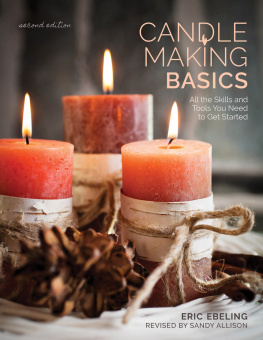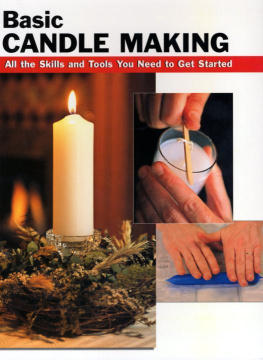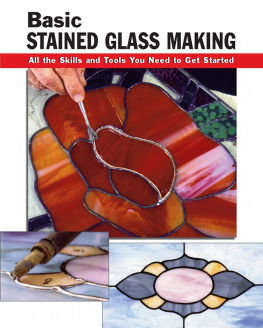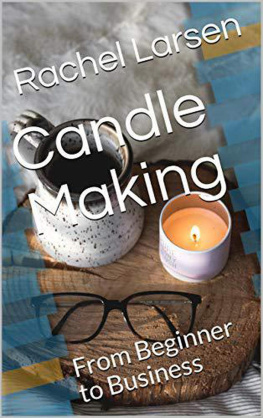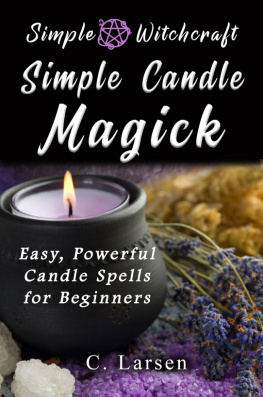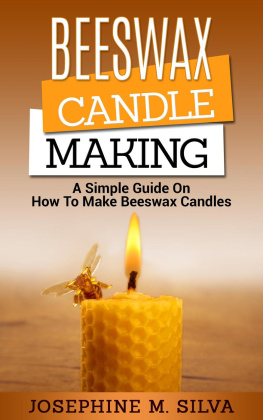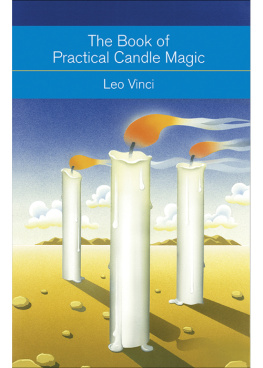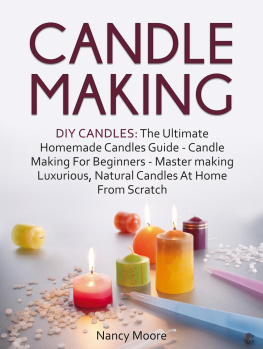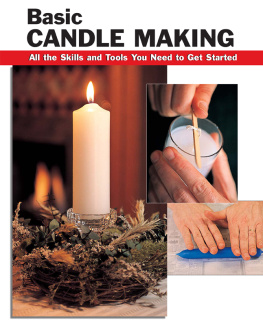Eric Ebeling - Candle Making Basics: All the Skills and Tools You Need to Get Started
Here you can read online Eric Ebeling - Candle Making Basics: All the Skills and Tools You Need to Get Started full text of the book (entire story) in english for free. Download pdf and epub, get meaning, cover and reviews about this ebook. year: 2018, publisher: Stackpole Books, genre: Home and family. Description of the work, (preface) as well as reviews are available. Best literature library LitArk.com created for fans of good reading and offers a wide selection of genres:
Romance novel
Science fiction
Adventure
Detective
Science
History
Home and family
Prose
Art
Politics
Computer
Non-fiction
Religion
Business
Children
Humor
Choose a favorite category and find really read worthwhile books. Enjoy immersion in the world of imagination, feel the emotions of the characters or learn something new for yourself, make an fascinating discovery.
- Book:Candle Making Basics: All the Skills and Tools You Need to Get Started
- Author:
- Publisher:Stackpole Books
- Genre:
- Year:2018
- Rating:3 / 5
- Favourites:Add to favourites
- Your mark:
- 60
- 1
- 2
- 3
- 4
- 5
Candle Making Basics: All the Skills and Tools You Need to Get Started: summary, description and annotation
We offer to read an annotation, description, summary or preface (depends on what the author of the book "Candle Making Basics: All the Skills and Tools You Need to Get Started" wrote himself). If you haven't found the necessary information about the book — write in the comments, we will try to find it.
Eric Ebeling: author's other books
Who wrote Candle Making Basics: All the Skills and Tools You Need to Get Started? Find out the surname, the name of the author of the book and a list of all author's works by series.
Candle Making Basics: All the Skills and Tools You Need to Get Started — read online for free the complete book (whole text) full work
Below is the text of the book, divided by pages. System saving the place of the last page read, allows you to conveniently read the book "Candle Making Basics: All the Skills and Tools You Need to Get Started" online for free, without having to search again every time where you left off. Put a bookmark, and you can go to the page where you finished reading at any time.
Font size:
Interval:
Bookmark:
So many people helped to transform this book from concept to reality, and I apologize to anyone I have failed to recognize here.
My gratitude to: Alan Wycheck of Wycheck Photography in Harrisburg, Pennsylvania, whose skills behind the lens captured the vision of this book; Scott Ham of the Gettysburg Candle Company and Moonacre Ironworks, whose expertise drips like melted wax from these pages; Beth, David, and Kenny Fine, for the use of their once-spotless kitchen as a candle making workshop/photography studio; Kellie Carpenter, for supplying me with all of that prime candle making equipment; Kay and Devron Wilcox, for serving as a courier service; Bill Stevens, also known as the Candle Man, for taking time to demonstrate; Amy Wagner, for all the help; Ron Zappile, for the gracious use of his scenic backyard as a shooting locale; and last, but far from least, my wife Andrea and son Alec, who never complained as odd smells wafted through the house and strange creations cooled on the countertops.
Thanks for your patience, you two; I guess you know what well be giving as gifts this year.
Eric Ebeling

For the beginner, the two most important ingredients needed for candle making cant be found in any craft store. They are time and patience, and properly used, they will serve you well.
The basic projects in this book require no highly advanced skills to complete. They were selected because they represent the basic building blocks of all candle making. Once comfortable with the skills and concepts of each project, you will be ready to create a nearly limitless number of candle variations and modifications on your ownwhether its experimenting with colors and aromas, making custom molds, or dreaming up your own kind of unique candle.
Getting to that point, however, requires a patient, measured approach. Think of yourself as a chef, turning plain wax into an attractive main dish using color dyes and fragrances as spices. Like in cooking, preparation and execution in candle making are best not rushed.
Make sure you have the recommended amount of time needed to complete each project. If you dont, wait until you do.
Take some time to learn about the materials and equipment needed for successful candle making.
Some of the items listed on the following pages are probably in your kitchen cupboards right now. Other more specialized pieces of equipment need to be purchased in a craft or department store, or online.
Each project requires a different combination of the items listed. For that reason, a detailed checklist for the container, molded, dipped, and rolled beeswax candle projects is included at the start of each chapter. It can be copied and taken along to the store like a shopping list. Its a good idea to know the function and price range of each item on your list before you enter the store.
All amounts listed are in U.S. standard measurements. Consult the measurement conversion chart on page 185 for metric equivalents.
A word of advice learned the hard way: Wax can be stubborn to remove completely from pots, pans, and accessories, so dont use the good cookware or utensils when making candles.
Paraffin, a petroleum by-product, is the recommended wax for making the hot-wax candle projects in this book. Odorless, colorless, and relatively inexpensive, quality paraffin is available in most craft supply stores, where it is sold mainly in 10-pound slabs or 1-pound bags of pellets.
Different formulations of paraffin melt at different temperatures, from about 100 degrees Fahrenheit (30 degrees Celsius) to 160 degrees Fahrenheit (71 degrees Celsius). Beginners should choose an easy-to-use paraffin with a melting point of about 140 degrees F. (60 degrees C.), which wont turn to liquid too quickly or require too much heat to melt properly. Expect to pay $1 to $2 per pound. Pellets made of beeswax, which needs no additional dyes or fragrances, can be melted and used in the same way as paraffin.
Keep in mind that a hammer and chisel (or screwdriver) are needed to break away chunks of paraffin from a slab prior to melting.
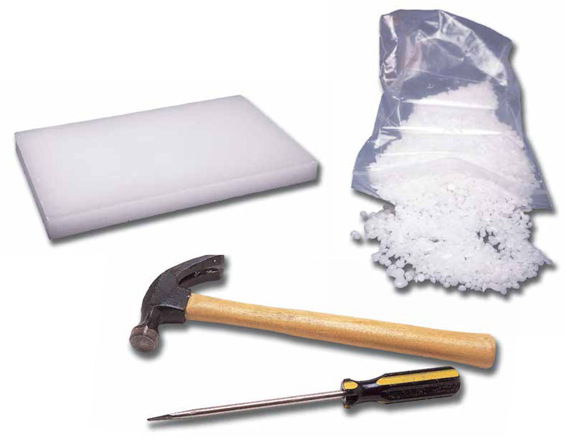
The shelves of the local craft store teem with all manner of specialty waxes, each of which serves a distinct purpose outside the scope of the projects set forth here. They include dip and carve wax, a soft, malleable substance that is softer than most waxes and can be shaped without breaking; gel wax, which has a consistency of set gelatin and requires no heat to use in containers; and wax blends with special characteristics, such as low or high melting points, greater hardness, and limited shrinkage during cooling. Consider exploring these alternatives after gaining experience with the basic ingredients.
This additive allows the candle to hold more color and makes the paraffin harder. Known also as stearic acid, this fat derivative makes paraffin more opaque, helps dyes and scents mix well with melted paraffin, and reduces drips while burning. Once made exclusively from animal fat, stearin is now also made from plant oil, such as palm. Solid at room temperature, it is used in a roughly 10 to 1 ratio with wax, so for 16 ounces of wax, 3 tablespoons (1.5 ounces) of stearin are needed. Expect to pay up to $10 for a 1-pound bag of soap-like flakes or pellets; available in most craft stores.
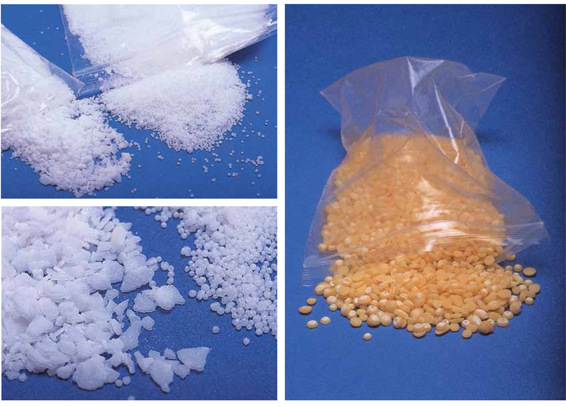
While stearin is the recommended paraffin additive for container, molded, and dipped candles, a number of other additives are available in craft stores. Most of them, such as a trademarked substance called Vybar and a category of additives known as microwaxes, are also designed to harden candles, allow them to burn longer, and make them hold color better. Some supply companies make paraffin mixtures that already contain additives and need no further embellishment. Advice: Read labels carefully when purchasing.
Wick size must be matched to suit the diameter of the candle for proper burning. A wick that is too small will quickly drown in a pool of melted wax. A wick that is too large will smoke, sputter, and burn too hot. Manufacturers use a labeling system that specifies correct wick/candle combinations, so keep that in mind while shopping.
Most regular-size candles, those up to 3 inches in diameter, require just one central wick for proper burning. Very large candles may require two or more evenly spaced wicks.
The two main types of wick are cotton core and wire core. Cotton core wick, which is usually made up of strands braided around a thick cotton center, is recommended for making poured, dipped, and beeswax candles. It can be either round or flat braid.


Wire core wick is recommended for use in container candles, which burn the longest of all candles. As the name indicates, a thin piece of wireusually made of zincruns through the center of the wick, giving it more support and allowing it to burn for a greater duration than standard wick. Avoid using older wire core wick, because it may contain lead, a standard core ingredient in manufacturing a number of years ago. Its use has been discontinued because of health concerns.
Font size:
Interval:
Bookmark:
Similar books «Candle Making Basics: All the Skills and Tools You Need to Get Started»
Look at similar books to Candle Making Basics: All the Skills and Tools You Need to Get Started. We have selected literature similar in name and meaning in the hope of providing readers with more options to find new, interesting, not yet read works.
Discussion, reviews of the book Candle Making Basics: All the Skills and Tools You Need to Get Started and just readers' own opinions. Leave your comments, write what you think about the work, its meaning or the main characters. Specify what exactly you liked and what you didn't like, and why you think so.

